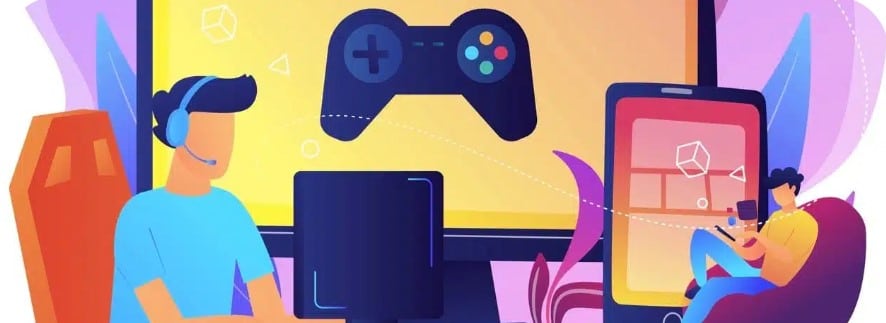Video games are no longer just a pastime—they’re culture, commerce, and in many ways, the language of an entire generation. Youth, in particular, are at the center of this cultural shift. According to the Entertainment Software Association, over 70% of U.S. households include a child who plays video games. For many kids and teens, video games are their primary form of entertainment, and in some cases, socialization.
Naturally, where young eyes go, marketers follow.
The marketing of video games to youth has become a sophisticated and multi-billion-dollar endeavor. It’s no longer limited to flashy TV spots or magazine ads—it’s embedded in social media, schools, influencer streams, TikToks, Twitch feeds, and even lunchroom conversations. And while this marketing drives enormous success for gaming companies, it also raises uncomfortable questions about commercialization, addiction, and what it means to ethically engage with young audiences.
To understand this landscape fully, we must look at the strategies, the psychological hooks, and the implications—both good and bad. And there’s no better case study to explore than Fortnite, the global phenomenon that redefined youth marketing in the digital age.
Fortnite: A New Blueprint for Youth Marketing
When Fortnite launched its free-to-play battle royale mode in 2017, it wasn’t the first to try the genre. What made it explode wasn’t just gameplay mechanics—it was marketing. Fortnite became a cultural movement, and a textbook example of how to capture the youth market without ever buying a single TV ad.
How did they do it?
1. Free-to-Play with Microtransactions
Fortnite was accessible to all—it cost nothing to download. For kids and teens, this eliminated the parental approval barrier that comes with a $60 price tag. The game monetized through cosmetic items—skins, emotes, pickaxes—purchased with in-game currency called V-Bucks.
What made this genius (and controversial) was that purchases didn’t affect gameplay, but they deeply influenced social currency. Skins became status symbols. If your friends had the newest outfit and you didn’t, you were left out. The system created an implicit peer pressure loop—an incredibly effective marketing strategy, but one with clear psychological implications.
2. Influencer and Celebrity Integration
Epic Games didn’t rely on conventional ads. Instead, they leveraged streamers like Ninja, whose broadcasts reached millions of young viewers. When rapper Drake played Fortnite with Ninja live on Twitch, it wasn’t just a moment—it was a marketing masterstroke. That stream drew over 600,000 concurrent viewers and catapulted Fortnite into mainstream media.
The game also integrated pop culture directly: Star Wars, Marvel, Travis Scott, Ariana Grande—all became in-game events. These collaborations weren’t ads; they were experiences. Players didn’t watch trailers for new movies—they played them inside Fortnite. The lines between game, ad, and entertainment blurred completely.
3. FOMO-Driven Seasonal Content
Every few months, Fortnite changes. New maps, new characters, new storylines. Each season is a carefully orchestrated event, preceded by teasers, leaks, and countdowns. The limited-time nature of content—especially cosmetics—creates a fear of missing out (FOMO), which is a powerful driver of youth engagement and spending.
Combine that with the Battle Pass system, which rewards progression with exclusive unlocks, and you have a system designed to keep young players checking in every day.
In short, Fortnite didn’t just market to youth—it became their digital playground, fashion runway, and concert venue.
The Good: Connection, Creativity, and Opportunity
Let’s be clear: not all youth video game marketing is predatory or manipulative. When done well, it can empower, inspire, and even educate.
1. Community Building
Games like Minecraft, Roblox, and Fortnite give kids a shared space to play and connect. The marketing behind these platforms emphasizes creativity and collaboration. When Minecraft marketed its “Education Edition” to schools, it opened the door for classroom learning through gaming. Similarly, Roblox offers coding and game design tools, encouraging kids to become creators, not just consumers.
2. Positive Representation
As marketing matures, we’ve seen increased efforts to include diverse characters and narratives. Games like Spider-Man: Miles Morales and Celeste have been praised for positive representation of race, gender identity, and mental health. Marketing these games to youth with intention and care helps build empathy and inclusion.
3. Esports and Career Pathways
Marketing games as part of esports ecosystems has created entirely new aspirations for youth. Sponsorships, tournaments, and streaming careers now attract the same enthusiasm once reserved for traditional sports. While the dream of becoming a millionaire pro-gamer is unlikely, the visibility of these paths has sparked interest in adjacent fields like game design, digital art, and marketing itself.
The Bad: Psychological Exploitation and Blurred Boundaries
Despite these positives, the marketing strategies that target young audiences often walk a fine ethical line.
1. Manipulative Monetization
Many games use reward mechanics intentionally modeled after gambling. Loot boxes, random reward crates, and gacha systems are prevalent. While regulators in countries like Belgium and the Netherlands have cracked down on these practices, many others—including the U.S.—still allow them. When youth are targeted with “chance-based” rewards that exploit impulsive behavior, ethical concerns skyrocket.
2. Screen Time and Dependency
Marketing that promotes daily log-ins, seasonal grinds, and social comparison leads to longer play sessions and increased dependency. Youth are often marketed “exclusive” content that’s only available for a short time. The underlying message: don’t stop playing, or you’ll miss out.
Studies from the American Psychological Association have shown that excessive gaming—especially when tied to compulsive monetization systems—can lead to behavioral issues, anxiety, and decreased academic performance. While gaming isn’t inherently harmful, the way it’s marketed can exacerbate unhealthy patterns.
3. Lack of Transparency
Games marketed to kids often hide the true cost of participation. “Free-to-play” rarely means free in practice. Skins, passes, and upgrades are all monetized in small, psychologically palatable increments—$4.99 here, $9.99 there. Kids don’t always understand the real-world value of virtual currency like V-Bucks or Robux.
Parents often find themselves on the receiving end of unexpected credit card bills, confused about how a “free” game drained their bank account.
The Legal and Cultural Landscape
Governments and regulators are catching up—slowly. In the U.S., the Federal Trade Commission fined Epic Games $520 million in 2022 for privacy violations and deceptive in-game purchases in Fortnite, including practices that tricked children into spending money without parental consent.
Meanwhile, advocacy groups are pushing for stricter controls on how games are marketed to youth. Some proposed measures include:
- Age-appropriate marketing labels
- Mandatory spending caps for minors
- Clearer disclosures on microtransactions
- Stricter data collection rules for underage users
But enforcement is difficult. Much of youth video game marketing happens organically—on YouTube, TikTok, or Discord—where content creators blur the line between personal endorsement and sponsored content. The rise of “kidfluencers” adds another layer of complexity, as children themselves become marketers to their peers.
Where Do We Go From Here?
1. Ethical Design and Marketing
Game developers and marketers have a responsibility to prioritize well-being. Just as we expect toy manufacturers to meet safety standards, we must demand that video game companies design and market with intention and transparency.
This means moving away from manipulative monetization, being upfront about costs, and creating experiences that respect a child’s cognitive development.
2. Media Literacy for Kids and Parents
Teaching kids (and their parents) to critically evaluate game marketing is crucial. Schools should include digital media literacy as a core subject, and developers should provide resources that explain how their games work—including monetization systems and data use.
3. Stronger Regulation
The industry should embrace proactive regulation that protects youth rather than waiting for backlash. Transparent labeling, spending limits, and ethical ad practices should be standard. Companies that lead in this area will not only earn trust—they’ll future-proof their brands.
Final Thoughts: The Responsibility of Influence
Youth marketing in video games is a high-stakes game. Done well, it can foster creativity, community, and joy. Done poorly, it can exploit vulnerability, erode trust, and set children up for long-term harm.
The question we must ask isn’t whether companies can market to children—it’s whether they should market in the ways they do. As video games continue to define the cultural fabric of the next generation, how we market them will shape not just play, but values, identity, and worldview.
Game developers and marketers have incredible influence. It’s time they own it—with transparency, integrity, and a vision for something bigger than profit.
Because the youth who log in today aren’t just players. They’re tomorrow’s creators, consumers, and citizens. And they deserve better than to be treated like microtransaction machines.
They deserve respect.



